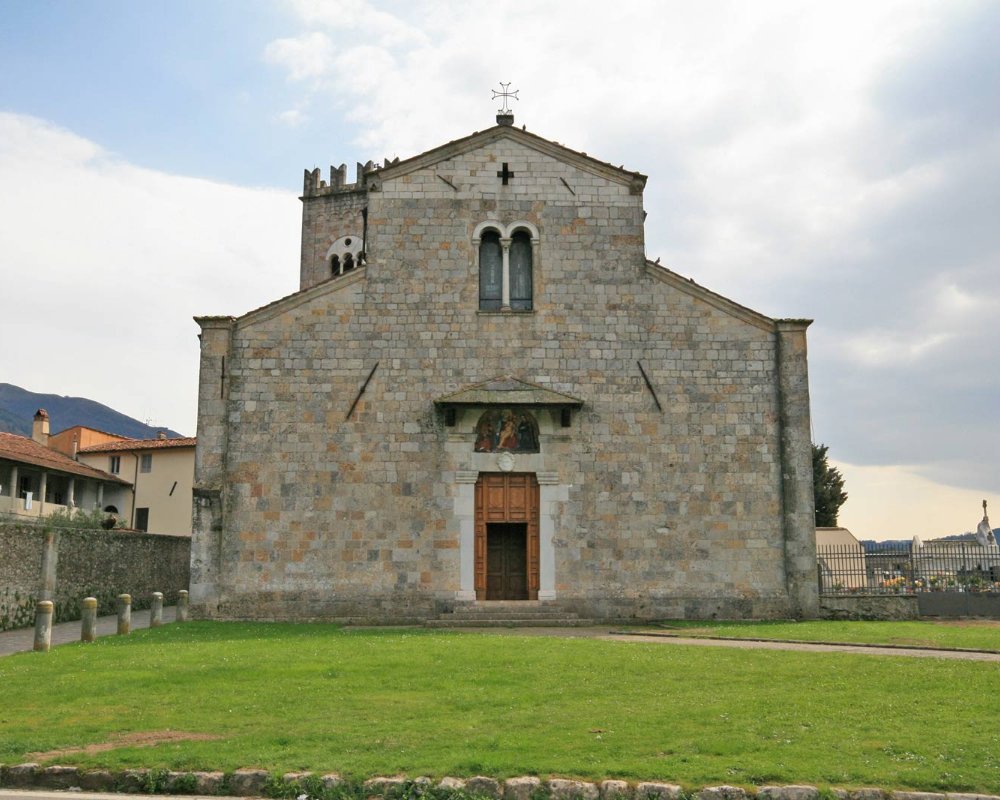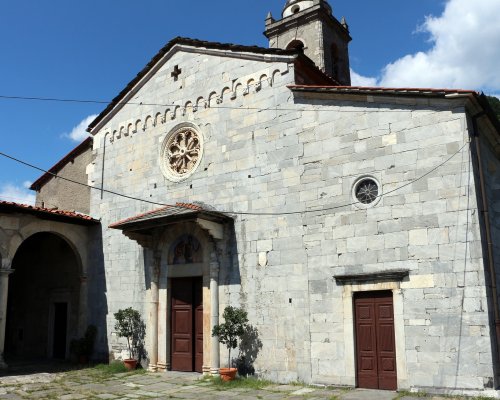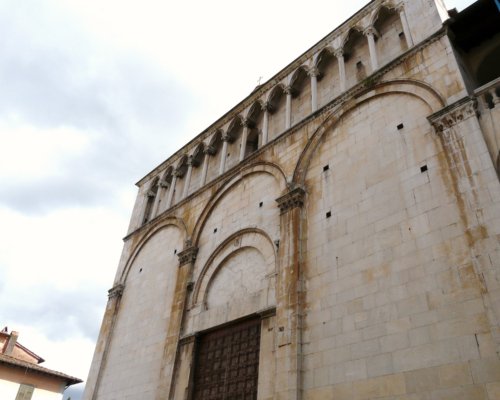An itinerary to learn about the historical riches of the Tuscan territory
Versilia is an area of Tuscany with a thousand souls. It is a region rich in history and jewels to discover, such as its ancient parish churches. To admire them and get to know them up close, we propose an itinerary that can be traveled by car or motorcycle at any season of the year. Among the stops: the Parish Church of Saints Giovanni and Felicita in Valdicastello, the oldest in the entire Versilia area; the church of Sant'Agostino in Pietrasanta, one of the main Gothic buildings in the area; and the Badia di San Pietro (Abbey of St. Peter) in Camaiore, on the ancient route of the Via Francigena, represents the only remaining building of the ancient Benedictine monastery built around the 8th century.
Our itinerary starts from Stazzema, a rather important town at the foot of the Apuan Alps. Impressed on the collective memory for its martyrs who fell during the war, it is home to numerous historical vestiges including the church dating from 1100 dedicated to Santa Maria Assunta that we encounter immediately at the beginning of the buit-up area. The church, originally with a single nave, was later enlarged with two aisles in the 1400s, the internal partitions demolished and replaced by two marble colonnades.
Our itinerary starts from Stazzema, a rather important town at the foot of the Apuan Alps. Impressed on the collective memory for its martyrs who fell during the war, it is home to numerous historical vestiges including the church dating from 1100 dedicated to Santa Maria Assunta that we encounter immediately at the beginning of the buit-up area. The church, originally with a single nave, was later enlarged with two aisles in the 1400s, the internal partitions demolished and replaced by two marble colonnades.
We set off again in the direction of Pietrasanta; after passing the town of Seravezza, we keep to the right and follow the signs for Vallecchia - Pietrasanta along the Aurelia. Here we encounter the Parish Church of Santo Stefano in Vallecchia. The parish church, begun in the 12th century and remodeled several times, preserves its initial layout with three naves divided by pillars and two columns with phytomorphic capitals of Romanesque origin and plinths with zoomorphic representations. The interior is richly embellished with marble groups and frescoes dating from the 1600s and executed by Tuscan craftsmen.
We set off again in the direction of Pietrasanta; after passing the town of Seravezza, we keep to the right and follow the signs for Vallecchia - Pietrasanta along the Aurelia. Here we encounter the Parish Church of Santo Stefano in Vallecchia. The parish church, begun in the 12th century and remodeled several times, preserves its initial layout with three naves divided by pillars and two columns with phytomorphic capitals of Romanesque origin and plinths with zoomorphic representations. The interior is richly embellished with marble groups and frescoes dating from the 1600s and executed by Tuscan craftsmen.
We continue along the Aurelia until we reach Pietrasanta, where we visit in the main square, the Church of Sant'Agostino, which is one of the main Gothic buildings in Versilia. The church, perfectly preserved in its 14th-century layout, is part of the Augustinian complex of the same name founded in the 14th century during the period of maximum development of Pietrasanta. Also in this town we can visit the Duomo di San Martino (Cathedral of St. Martino), an architectural jewel in marble.
We continue along the Aurelia until we reach Pietrasanta, where we visit in the main square, the Church of Sant'Agostino, which is one of the main Gothic buildings in Versilia. The church, perfectly preserved in its 14th-century layout, is part of the Augustinian complex of the same name founded in the 14th century during the period of maximum development of Pietrasanta. Also in this town we can visit the Duomo di San Martino (Cathedral of St. Martino), an architectural jewel in marble.
We leave the state road for via Valdicastello Carducci road and once we arrive in the village of Valdicastello, we can visit the Parish church dedicated to Saints Giovanni and Felicita. The parish church, which stands isolated from the built-up area, is encountered before reaching the first houses, along the ancient medieval route, on a hillock among the olive trees. It is the oldest parish church in the entire Versilia area and preserves on the external walls traces of all the interventions that occurred over the centuries, in particular during the Gothic period, when the main facade was enriched with a rose window. The austere interior conceals on the floor several 16th-century tombs. Both the sinopia in the left aisle, which testifies to the pre-Romanesque style of decoration, and the frescoes that can be traced back to the late 14th century, which adorn part of the apse and the tabernacle we find to the right of the entrance, deserve careful observation. To the left of the entrance is a marble sarcophagus with anthropomorphic decoration.
We leave the state road for via Valdicastello Carducci road and once we arrive in the village of Valdicastello, we can visit the Parish church dedicated to Saints Giovanni and Felicita. The parish church, which stands isolated from the built-up area, is encountered before reaching the first houses, along the ancient medieval route, on a hillock among the olive trees. It is the oldest parish church in the entire Versilia area and preserves on the external walls traces of all the interventions that occurred over the centuries, in particular during the Gothic period, when the main facade was enriched with a rose window. The austere interior conceals on the floor several 16th-century tombs. Both the sinopia in the left aisle, which testifies to the pre-Romanesque style of decoration, and the frescoes that can be traced back to the late 14th century, which adorn part of the apse and the tabernacle we find to the right of the entrance, deserve careful observation. To the left of the entrance is a marble sarcophagus with anthropomorphic decoration.
Leaving the built-up area of Valdicastello, we return to the Sarzanese state road leading from Pietrasanta to Lucca and head toward Camaiore where, in Piazza S.Bernardino, we can observe the Collegiate Church of St. Maria Assunta. Outside the built-up area of Camaiore, on the ancient route of the Via Francigena, we encounter the Badia di San Pietro, the only surviving element of the ancient Benedictine monastery built around 760, of which we can still see the door that today is the access to the churchyard. The structure of the church that we can observe, however, has more recent origins. Refounded in the 12th century, it was remodeled following earthquakes and in successive rounds between 1856 and 1902 until the complete reconstruction of the bell tower, the gable and some facade elements. Inside, don’t miss the tabernacle and stoup.
Leaving the built-up area of Valdicastello, we return to the Sarzanese state road leading from Pietrasanta to Lucca and head toward Camaiore where, in Piazza S.Bernardino, we can observe the Collegiate Church of St. Maria Assunta. Outside the built-up area of Camaiore, on the ancient route of the Via Francigena, we encounter the Badia di San Pietro, the only surviving element of the ancient Benedictine monastery built around 760, of which we can still see the door that today is the access to the churchyard. The structure of the church that we can observe, however, has more recent origins. Refounded in the 12th century, it was remodeled following earthquakes and in successive rounds between 1856 and 1902 until the complete reconstruction of the bell tower, the gable and some facade elements. Inside, don’t miss the tabernacle and stoup.
From Camaiore, we proceed along Provincial Road 1 in the direction of Pieve di Camaiore - Lucca. The road begins to climb and soon becomes winding as far as the locality of Montemagno. Continuing further uphill, we reach the crossroads for Gualdo - Pieve a Elici - Massarosa. At the fork, we turn right and proceed for about 5 kilometers in the direction of Massarosa, we go beyond the crossroads for Gualdo and reach Pieve a Elici where we will visit the Romanesque Parish church of San Pantaleone. The origins of this church can be traced back to San Frediano, bishop of Lucca, during his work of evangelization at the turn of the fifth and sixth centuries.
From Camaiore, we proceed along Provincial Road 1 in the direction of Pieve di Camaiore - Lucca. The road begins to climb and soon becomes winding as far as the locality of Montemagno. Continuing further uphill, we reach the crossroads for Gualdo - Pieve a Elici - Massarosa. At the fork, we turn right and proceed for about 5 kilometers in the direction of Massarosa, we go beyond the crossroads for Gualdo and reach Pieve a Elici where we will visit the Romanesque Parish church of San Pantaleone. The origins of this church can be traced back to San Frediano, bishop of Lucca, during his work of evangelization at the turn of the fifth and sixth centuries.


